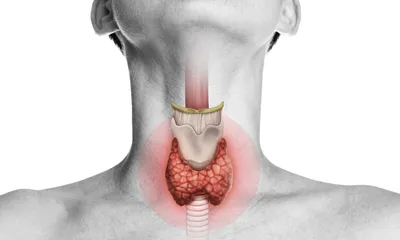Diabetes
-
Description
-
Signs & Symptoms
-
Anatomy
-
Cause
-
Diagnosis
What is Diabetes?
Diabetes is a metabolic disease where prolonged periods of elevated glucose (sugar) levels in the blood are seriously detrimental to the body and overall health, including the risk of major tissue or organ damage and several other associated negative health outcomes. These include diabetic neuropathy (nerve damage), atherosclerosis, cardiovascular disease, stroke, peripheral artery disease, glaucoma, and kidney disease. Diabetes can promote excessive weight gain too, and you also have an increased chance of osteoporosis if you are diabetic.
There are two types of diabetes. Type 1 diabetes is an autoimmune system deficiency in the body where an insufficient amount of insulin is produced by the body and blood sugar cannot be properly channeled into cells for energy. Type 2 diabetes is when a person has developed insulin resistance and blood glucose goes up over time as insulin isn’t able to work as it should normally.
What Causes Diabetes?
Type 1 is commonly an inherited condition, and a person can develop Type 1 diabetes without being in poor health or making unhealthy lifestyle choices. Genetic factors are usually at the root of that individual having diabetes, but for Type 2 diabetes it is almost always attributable to diet and lifestyle choices, and most notably with excessive dietary sugar intake, sedentary lifestyle, and the person being overweight or obese.
With Type 1 diabetes the body’s autoimmune system mistakes the body’s cells for invaders and it starts attacking cells, some of which are in the pancreas and responsible for the production of insulin. The only two risk factors for Type 1 diabetes are genetic history and advanced age, whereas for Type 2 diabetes there is a much longer list of risk factors. They include:
- Excess abdominal fat
- Women giving birth to a baby that weighs more than 4kg
- Black, Hispanic, American Indian, or Alaska Native racial heritage
- Polycystic ovary syndrome
Diabetes Symptoms
It is usually quite clear that something is wrong with their health when someone becomes prediabetic and is in the process of developing diabetes. These diabetes symptoms include excessive and chronic thirstiness, frequent urinary urges, excessive hunger, unexplained fatigue, blurred vision, very dry skin, cuts or sores not healing properly, and getting infections much more often than previously.
Numbness or tingling in the feet is a sign of diabetic neuropathy, and people who are prediabetic may also experience mood swings and more irritability. It is important to note that for many Type 2 diabetes sufferers they may not experience symptoms at all while prediabetic and only start to have them once they have fully developed Type 2 diabetes.
Diabetes Treatment
The most conventional approach to diabetes treatment is to have the person start on blood glucose regulating medications like Amaryl or Janumet, among many others used to keep blood sugar in check and prevent diabetes from worsening. Diet and lifestyle changes are almost always going to be required too, and it is entirely common for doctors to make it clear that lowering dietary sugar intake – including from carbohydrates – and increasing physical exercise levels is necessary if these medications are to work effectively for lowering blood sugar.
Signs & Symptoms
- Increased thirst
- Frequent urination
- Extreme hunger
- Unexplained weight loss
- Fatigue
- Blurred vision
- Slow-healing sores
- Frequent infections
- Tingling or numbness in the hands or feet
Anatomy
- Pancreas
- Islets of Langerhans
- Blood vessels
- Nervous system
- Kidneys
- Eyes
- Heart
Cause
- Genetic factors
- Insulin resistance (Type 2 Diabetes)
- Autoimmune destruction of insulin-producing cells (Type 1 Diabetes)
- Obesity
- Physical inactivity
- Poor diet
- Hormonal changes
- Pancreatic diseases
- Certain medications
Diagnosis
- Fasting blood sugar test
- Oral glucose tolerance test
- HbA1c test (Glycated hemoglobin test)
- Random blood sugar test
- Continuous glucose monitoring (CGM)
- Urine tests
- Ketone testing
- Insulin and C-peptide levels



